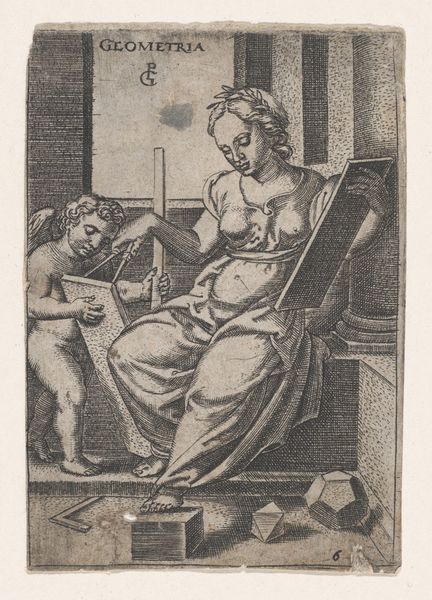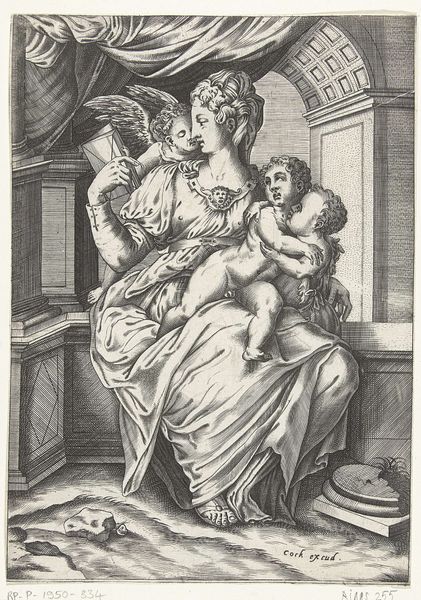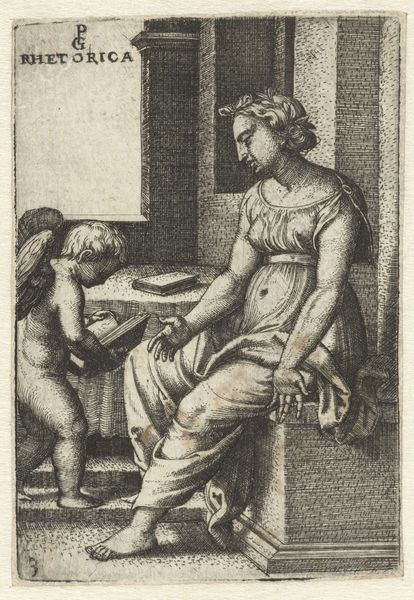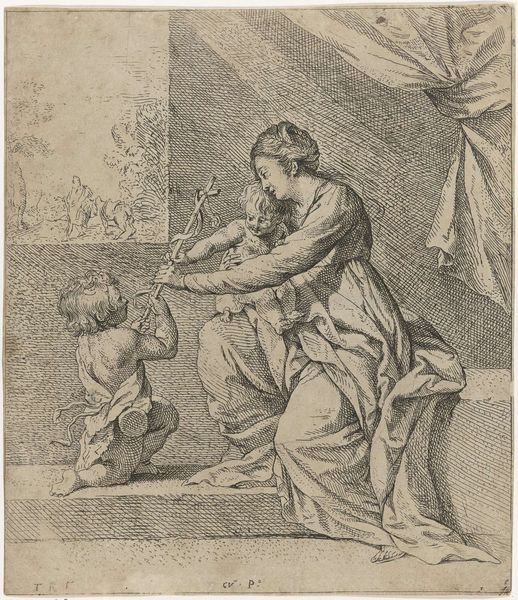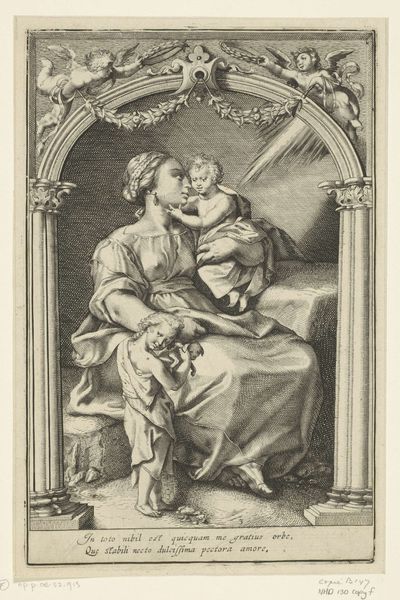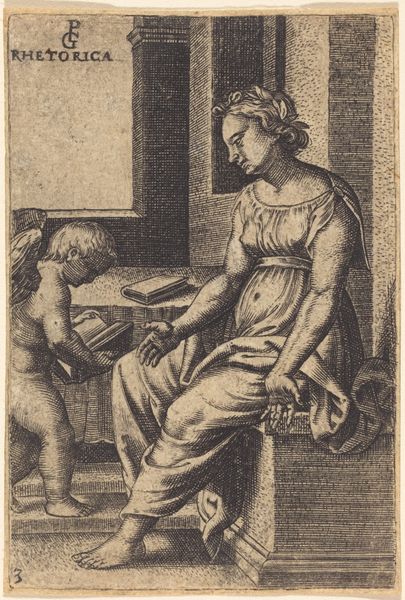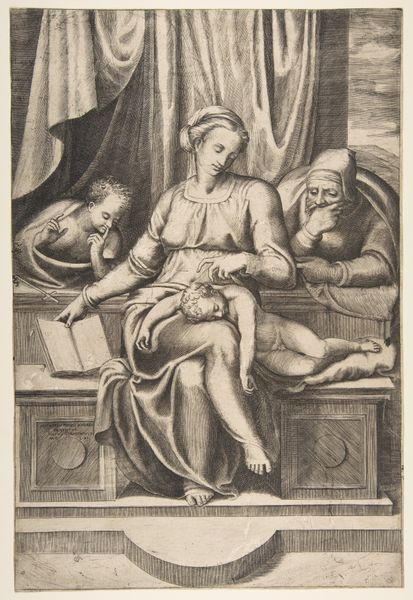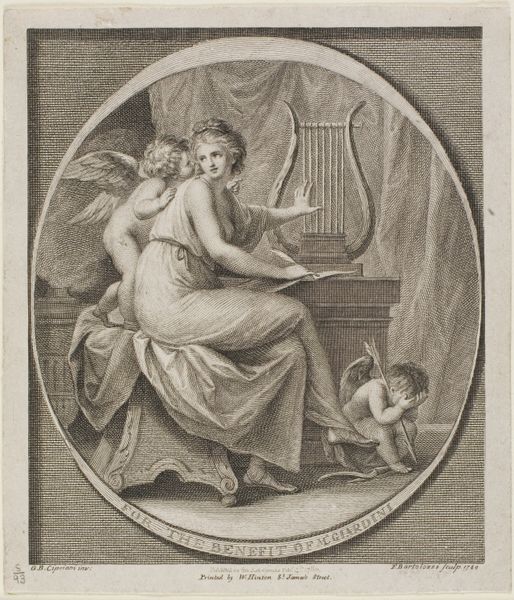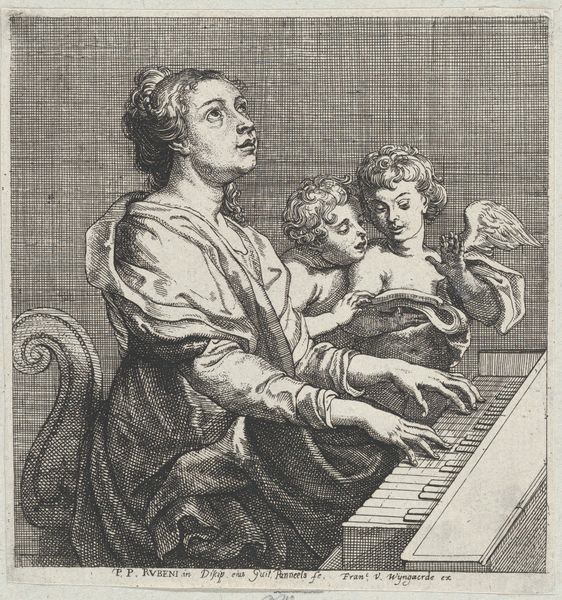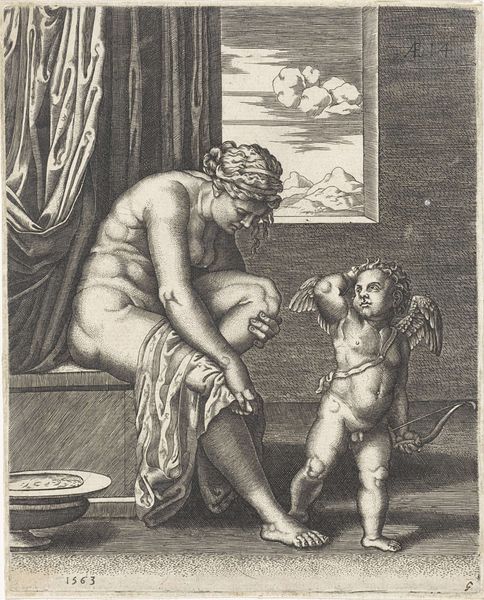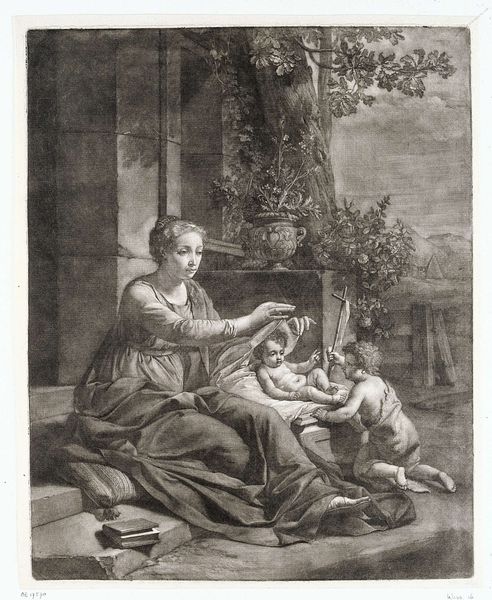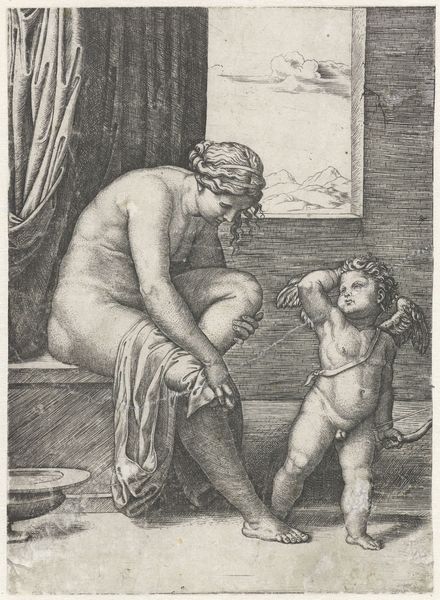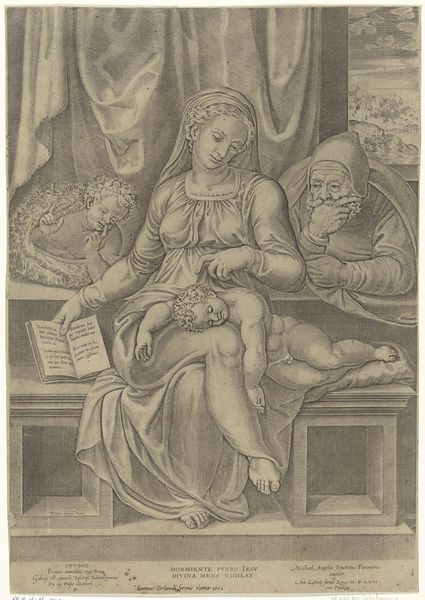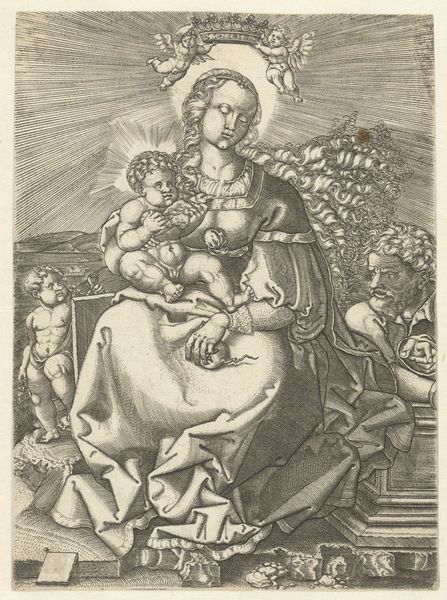
print, engraving
#
allegory
# print
#
old engraving style
#
figuration
#
personal sketchbook
#
geometric
#
history-painting
#
northern-renaissance
#
engraving
Dimensions: height 75 mm, width 52 mm
Copyright: Rijks Museum: Open Domain
Editor: This engraving, "Meetkunde" or "Geometry", by Georg Pencz, made sometime between 1539 and 1543, shows a seated woman holding a tablet and a compass. I find the precise, almost mechanical lines oddly beautiful. What catches your eye? Curator: Primarily, the composition itself. Notice how Pencz uses a clear vertical axis to structure the image. The figures—Geometria and the putto—are meticulously positioned to create a balanced, almost symmetrical arrangement. Editor: The woman is wearing a wreath; is that important? Curator: It speaks to the artistic canon, doesn’t it? Laurel wreaths historically crown intellectual figures. Her attire, her implements, her placement -- all function to tell the viewer about what is important in this scene, a world steeped in order. What of the geometric solids scattered at the base? How do those contribute to the overarching design of the image? Editor: I hadn’t thought about them like that! They anchor the figure but also give depth to the foreground...a foreground full of representations of geometry. Curator: Precisely. Also, note the relationship between the figures. Their interaction, the sharing of knowledge, the duplication of instruments. In addition, the consistent texture, created with very fine engraving, across the whole piece shows dedication and skill. The interplay creates both rhythm and a kind of stillness. Editor: I’m starting to see the print as a cohesive, formal exercise in geometry rather than just an image *of* geometry. The emphasis on form clarifies meaning. Curator: Indeed. Pencz elevates the abstract concept of Geometry through carefully calibrated forms, lines, and spatial relationships, compelling us to contemplate the fundamental principles of order. I will carry that appreciation with me.
Comments
No comments
Be the first to comment and join the conversation on the ultimate creative platform.
